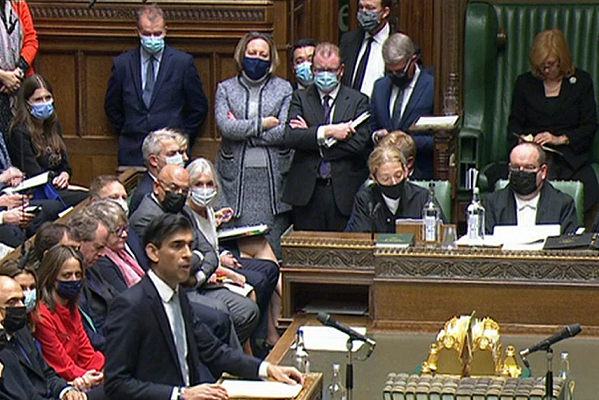You are viewing 1 of your 1 free articles
Government ‘looking afresh’ at cladding funding after Sunak omits reference to loan scheme
The government has promised to “look afresh” at funding solutions to protect leaseholders from cladding costs after the chancellor failed to mention a loan plan to help those living in unsafe blocks while facing MPs yesterday.

In a statement issued by the Department of Levelling Up, Housing and Communities to Inside Housing, a spokesperson said that new housing secretary Michael Gove was “looking afresh” at the issue to make sure that “everything was being done to protect and support those affected” and promised that further details will be set out in due course.
It added it was unacceptable that leaseholders were facing excessive bills and called on building owners and the industry to make buildings safe without passing on the costs.
The statement was issued after Inside Housing asked the department what the current status of the loan scheme put forward in February by previous housing secretary Robert Jenrick.
In February, Mr Jenrick said the government would introduce a scheme that would see leaseholders offered long-term, low-interest loans to remove combustible cladding from buildings between 11 metres and 18 metres tall. The costs of paying back these loans would be included in leaseholders’ service charges and be limited to £50 a month.
But when asked about what type of support leaseholders will receive outside of the £5bn Building Safety Fund currently in place for buildings taller than 18 meters with dangerous cladding, chancellor Rishi Sunak did not mention the loan scheme as an additional funding stream.
When asked by Siobhain McDonagh, Labour MP for Mitcham and Morden, who would be paying for the removal of cladding, the chancellor said the government had introduced a residential property tax and the Building Safety Fund, which when combined would contribute £5bn to cladding remediation for leaseholders.
When probed on how remediation work not covered by the Building Safety Fund or the residential property tax would be funded, Mr Sunak said that would be paid “as with everything else” and through the “regular sources of funding”.
Last year, the Housing, Communities and Local Government (HCLG) Select Committee estimated that the full cost of fixing cladding issues in the UK’s housing stock could be upwards of £15bn.
Aside from the Building Safety Fund and recouping costs through the developer tax, the majority of the other re-cladding costs will have to be paid by leaseholders.
However, another potential funding stream, the loan scheme first mooted in February, was not referenced by Mr Sunak.
It comes after there was no mention of the loan scheme in his Spending Review speech, which set out spending commitments for the next three years, or the subsequent documents.
Just after the loan scheme was first announced in February, housing minister Christopher Pincher promised there would be more details of how it would work in the Spring Budget, which took place in March.
When this did not happen, Mr Pincher told parliament in April that the department would “work at pace” to develop the details of the loan scheme and communicate them to the house as quickly as possible.
In a meeting with resident groups, building safety minister Lord Greenhalgh and department officials in July, leaseholders were told that there would be more details on how the loan scheme would work in September.
The loan system plan was met with criticism from leaseholders when first announced in February, with the End Our Cladding Scandal campaign group saying at the time that the loans were longer than mortgage terms and are “not even enough to cover the cost of making buildings that the government consider most high risk safe”. There are also questions around how the loan will be passed on for a property when they are bought and sold.
In July, HCLG Committee chair Clive Betts wrote to Lord Greenhalgh voicing the committee’s “extreme concerns” that under the loan scheme leaseholders could still face uncapped costs for critical fire safety repairs.
Giles Grover from the End Our Cladding Scandal campaign said: “Nearly nine months [since] Jenrick’s announcement of the £50-per-month loan scheme for mid-rise buildings, designed to force innocent homeowners pay for the mistakes of the state and industry, there is still not one speck of clarity on how this imposed cladding tax would work in practice without decimating property prices and pushing thousands into negative equity.
“We urge Michael Gove to look again at this ludicrous attempt at a ‘solution’ and ensure the financing costs are put to better use through the form of a grant for remediation and/or risk mitigation in all buildings below 18 metres. The force loan cladding tax scheme must be consigned to the bin, where it belongs.”
Sign up for our fire safety newsletter
Already have an account? Click here to manage your newsletters











